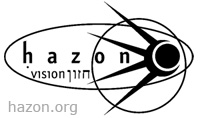 Talk to the Hand is an excellent book I am reading on rudeness in today's society. Rudeness is a fun topic, and Lynne Truss has lots of fun with it.
Talk to the Hand is an excellent book I am reading on rudeness in today's society. Rudeness is a fun topic, and Lynne Truss has lots of fun with it.However, rudeness is also a factor in both my VC worlds: venture capital and venture cycling. As another in my series of VC:VC series, here are some musings.
In the startup world, it is no secret to entrepreneurs just how rude venture capitalists can be. This post from Mark Suster, an entrepreneur currently raising funds for his company, Koral, captures the gestalt wonderfully well. (It has the added benefit of ranting against Powerpoint as strongly as I do!)
Recently, we at Sigma decided we would publicly leave our cell phones and blackberries at the door (or with our assistants) before going into a meeting with entrepreneurs. This has a two fold benefit. First, we are not tempted to be one of those rude groups focused more on the gizmo than the guests. Second, it looks great!
Paul Levy, CEO of Beth Israel Deaconess Medical Center in Boston (one of the large Harvard affiliated teaching hospitals), recently commented on this in his blog. He challenges all of us to go cold turkey on Treos and Blackberries. As one who does not have email follow me on my wireless device, I can wholeheartedly applaud his own approach and his suggestion that the rest of the world follow suit.
Of course, these musings are equally important in the non-profit world where my venture cycling is part of my life chairing the board of Hazon. I notice that during board meetings there is far less bad Blackberry behavior than in my business meetings. People really do seem engaged and involved enough that they are happy to leave that all behind for a while. Moreover, I think that there is a respect for the volunteer nature of the engagement we all have. At those meetings we know that busy people are spending many hours involved in a cause about which we all care, and that to nurture others' passion, we should be as respectful as we can when we are in meetings. I like this (obviously) and am glad that at Sigma we are showing, at least in the form of it, that same respect for our entrepreneur visitors by checking those gizmos at the door.








